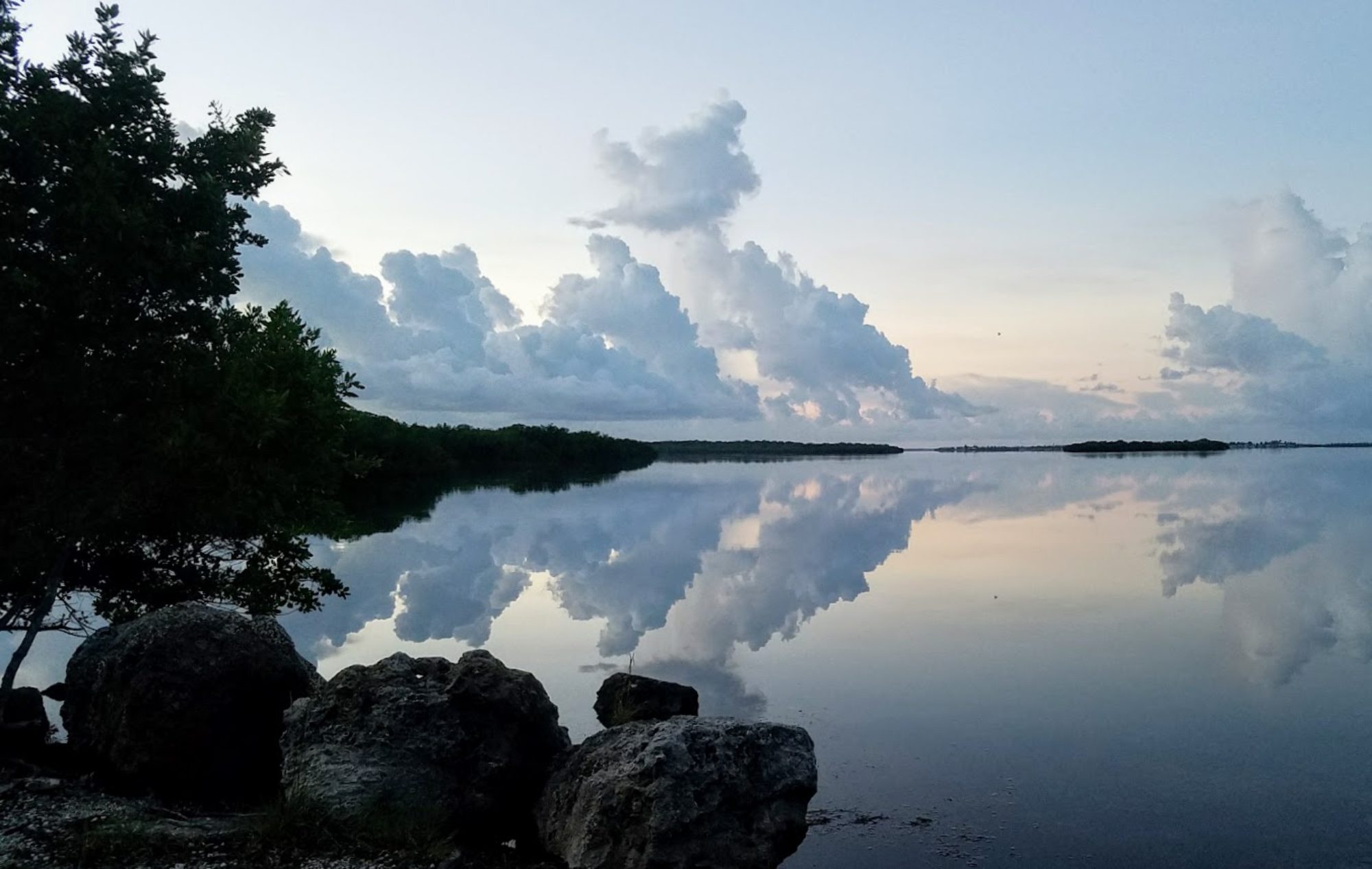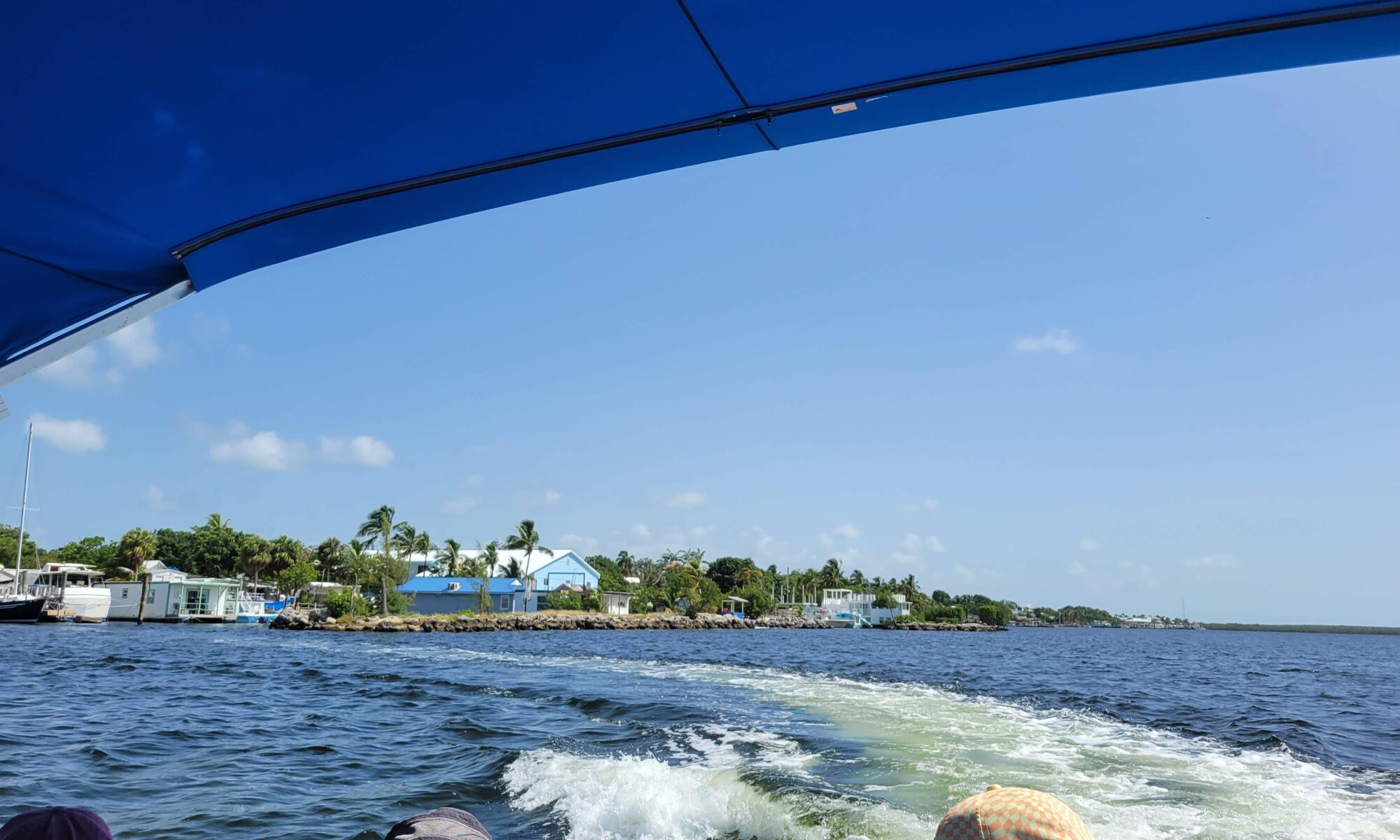After an afternoon and evening of orienting ourselves to Marine Lab, Tuesday morning started with breakfast and a short class on seagrass ecology. Florida has three predominant species of seagrass: turtle grass (Thalassia testudinum), shoal grass (Halodule wrightii), and manatee grass (Syringodium filiforme). Turtle grass has a broad, flat blade that is rounded at the top. Shoal grass, the first grass to grow in an area that has been disturbed, has a narrower blade with a flat or notched top. Manatee grass is cylindrical and has very shallow roots.
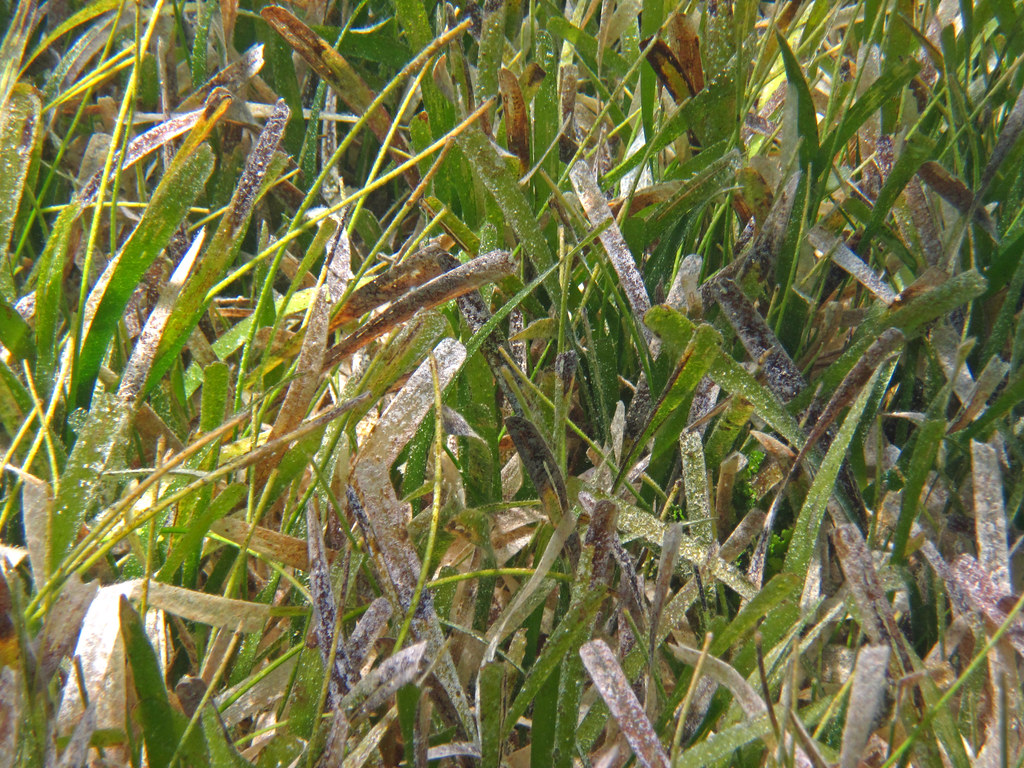
Healthy seagrass beds facilitate the coral reefs by filtering water coming from the mainland and providing habitat for reef fish and other life. The trapping of sediments and nutrients benefits the reef because healthy coral reefs require very low nutrient levels in the water. The grasses also serve as a food source for many marine animals, including my favorites, the lettuce sea slug (or sea lettuce) and seahorses. Sea life in an astonishing variety is able to hide, feed, and grow among the seagrass. Much of this life would not survive on the open reef. It would quickly be eaten by larger fish or pounded to death in the reef surf.
Here’s an interesting tidbit — efforts to restore damaged seagrass beds can be surprisingly low-tech! When a boat’s propeller scars the beds, PVC posts with wooden blocks can be put into the scars. Birds then sit on these blocks and poop in the water, giving the grass a nice fertilizer boost to repair the scar left in the grassbed.

Then the nine members of our class and Erin O’Neal, our Instructor, joined a captain on the Jumbi. Off we went into the gorgeous waters surrounding Key Largo. Just today I learned how the boat Jumbi got her name. Jumbi is a West Indian term for ghost or spirit and is also part of the name Moko Jumbi, the stilt walkers/dancers seen in Carnival celebrations. How cool is that!
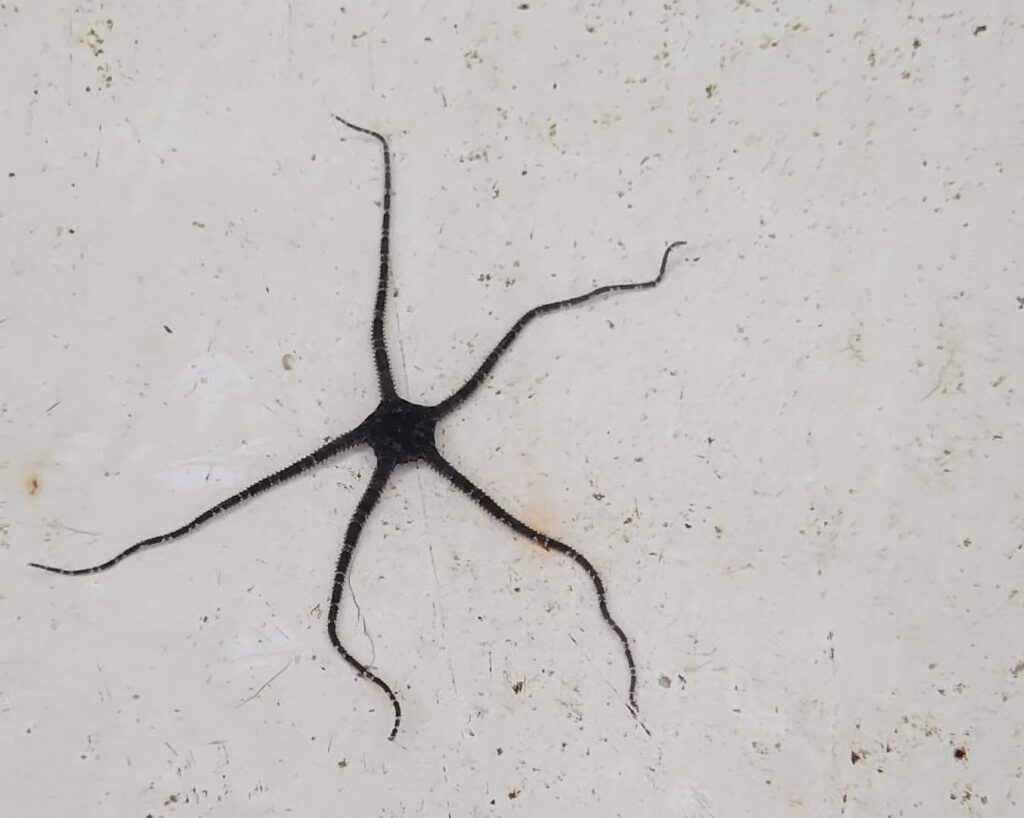
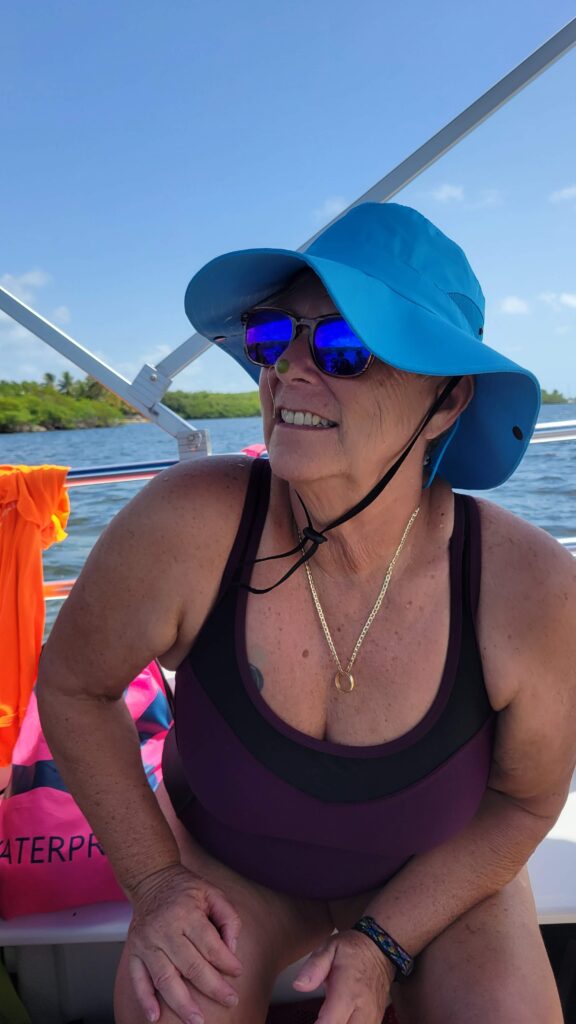
The seagrass bed that Erin selected for us was located just off of John Pennekamp State Park. There was a channel between us and the park, but I believe it would be easy to kayak to the site from Pennekamp. Perhaps I’ll find out someday soon! At any rate, we enjoyed floating over the seagrasses. We identified turtle grass and shoal grass, and then crossed over the channel. At the edge of the channel, the depth suddenly increases and we saw lobsters! We also scoped out the mangrove roots before gathering back on Jumbi to take a look at the specimens collected in the seagrass.
We spent about 30 minutes enjoying the sea stars, brittle stars, Mermaid Wineglasses, and other treasures in the bucket. Eventually, though, we had to return to Marine Lab — snorkeling really works up an appetite! So the specimens were returned to their home and we headed back to Largo Sound and Marine Lab. But not for long! After lunch, we rejoined Erin and our captain and headed off to the mangroves. You can read about that adventure here.
